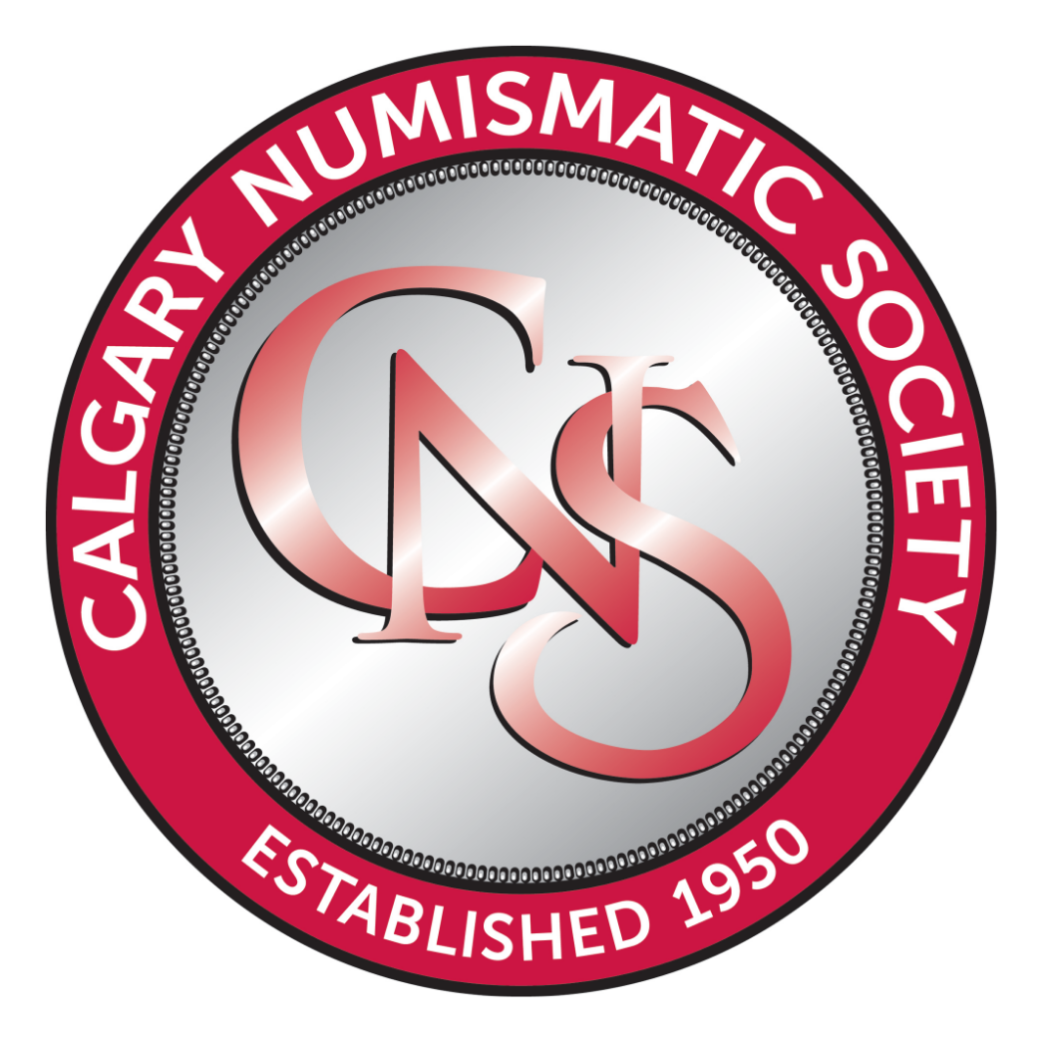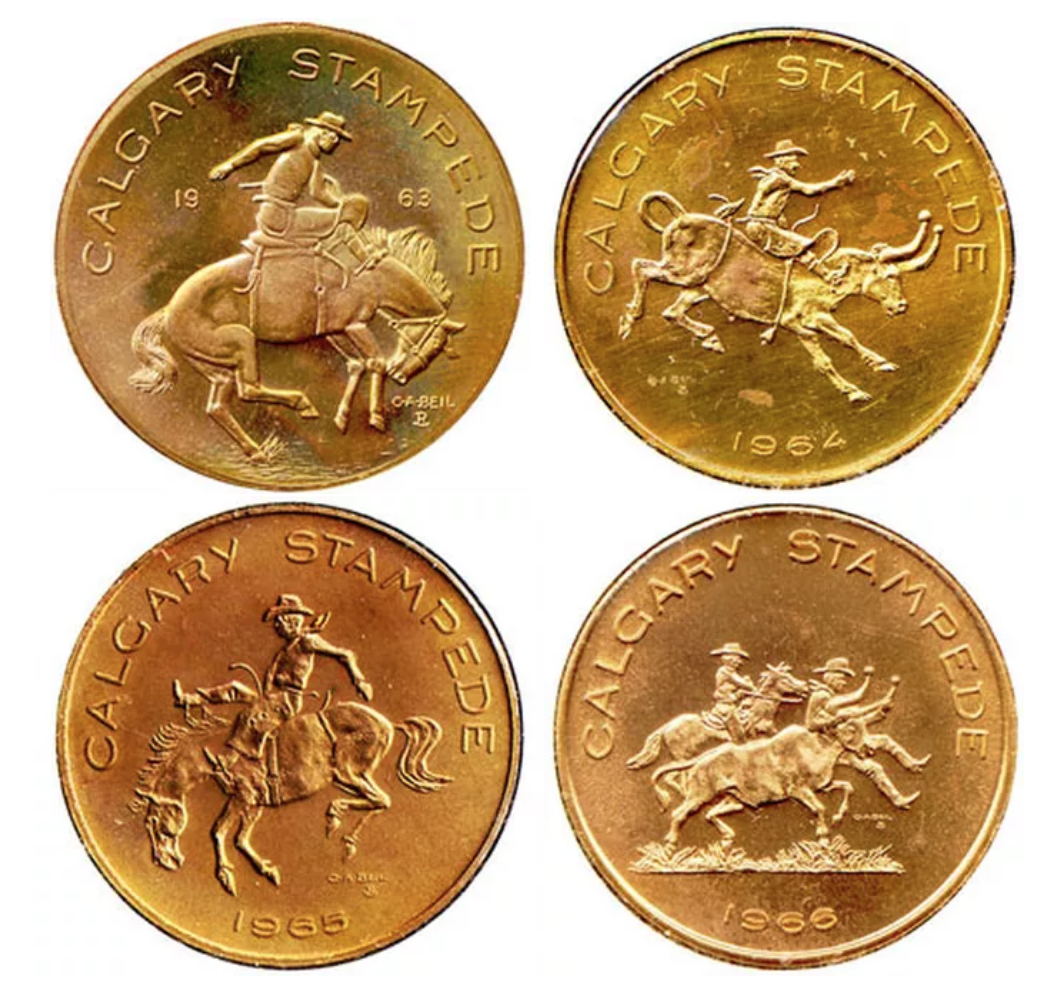The Art of Charlie Biel
July means one thing to Calgarians: The Calgary Stampede. Known worldwide as "The Greatest Outdoor Show on Earth", this week long festival of rodeo, agricultural exhibitions, and amusement park activities has been a trademark of Calgary since 1912.
The production of commemorative numismatic items for the Calgary Stampede dates back to at least 1925, but Trade Dollars, valid as legal tender in Calgary during the Stampede, were first produced in 1963. The illustrations above show the reverse of the first four trade dollars, designed by the prominent Alberta artist, Charlie Beil.
"Charlie Beil was born in Germany in 1894. He made his way to North America by jumping the ship he worked on in Argentina and traveling north. By the mid-1920s, he had worked his way to Montana as an itinerant mule skinner and cowboy. Although primarily a self-taught artist, he was encouraged by Charlie and Nancy Russell in Great Falls."(1)
Russell remained a mentor and major to Beil and a major influence on his work. Upon Russell's death, Beil followed the horse drawn hearse leading Russell's horse.
While working on a guest ranch in Montana in the 1930s, Beil met the influential Brewster family of Banff with whom he would continue to have a close relationship for the rest of his life. He moved to Banff in 1934 and established a studio producing murals, dioramas, and bronze sculptures. Probably the most well known of Beil's sculptures are the rodeo trophies which he produced for the Calgary Stampede.
Shortly after his arrival in Alberta, Beil worked on one of the most gargantuan public sculpture projects in Canada, the prehistoric park at the Calgary Zoo. The park was originally located on the west end of St. George's Island and featured life-sized replicas of dinosaurs in natural settings. Although not scientifically accurate, these sculptures provided an opportunity for several generations of young Calgarians to allow their imaginations to run wild, imagining themselves suddenly transported back to prehistoric times.
Beil received the degree of Doctor of Laws (honoris causa) from the University of Calgary in 1968 and remained active as an artist until his death in 1976.
(1) Western Art Auction Committee, 19th Annual Western Art Auction Catalogue (p. 43), Calgary Stampede 2000

